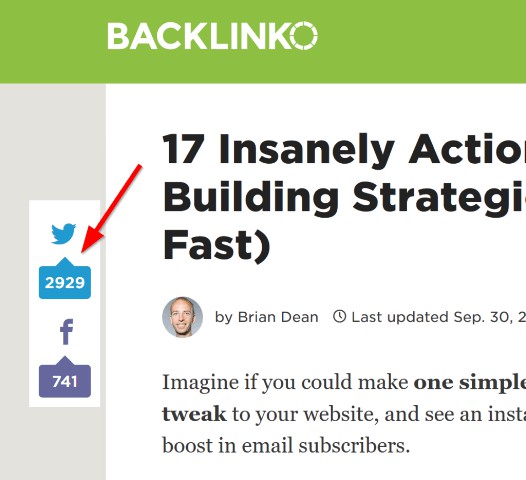SEO Copywriting: 17 Powerful Secrets (Upgraded for 2018)

Understanding SEO is fantastic.
Understanding Copywriting is great.
However, When you're able to do BOTH?
That is When you're able to slap an "S" on your chest...
...since You'll be unstoppable.
And Now I have something that will make you feel as though you have SEO superpowers:
17 Insanely actionable SEO copywriting tips that you can use at the moment.
Note: This post was initially published in 2015. I recently gave it a much needed upgrade. Additionally, I added a bunch of new tips that I recently learned. Enjoy!

A While back I published a post called, "Why Google Hates Your Website (Hint: It Has Something to Do With TrustRank)":

With This post I made a decision to really go after a key word that my opponents wouldn't bother targeting...
...even Even though it gets a decent number of searches.
What Was the key word?
"Google Hates my site"
Think It or not, I didn't pull this keyword from thin air.
I Chose this key word because I saw a great deal of people in SEO forums stating things such as this:

And If people post something in a forum, you can bet your ass they also search for the identical item in Google.
So I decided to utilize a variation of the keyword in my post:

Today, Besides rank #1 for the target key word ("Google TrustRank")...

...when Someone searches for "Google hates my site" (and other variations of that search), I show up in the top place:

How Do you use this technique for more traffic?
First, Boost your webpage just like you normally would (should you require a hand, look at these 14 innovative on-page SEO strategies).
However, Before you hit "publish", scan forums to get phrases and words people tend to use around your subject.
For Example, let us say your main keyword was "organic vegetable gardening".
You would search in Google with inurl:forum + "organic vegetable gardening":

This Will bring up a couple forum threads around that topic:

Skim The first few threads that you find.
When You see a phrase that looks like a good fit...

Skim The first couple of threads that you find.
When You find a term that looks like a good match...

...search That phrase Google:

If A lot of outcomes pop up (like for this instance), add those words and phrases into your article.

And You're good to go.
After You have added several Bucket Brigades, move onto technique #3...

Now's Super-smart Google doesn't care how many times you cram a keyword in your article.
Instead, It pays close attention to Latent Semantic Indexing (LSI) key words. (LSI Key words are a fancy way of saying: "synonyms and closely related words")
And These LSI keywords help Google understand what your page is all about.
For Example, let us say you write an article optimized around the keyword "cars".
How Does Google know whether your page is about:
- Cars the Automobile
- Cars the film
- The 1970s rock band (with awful hair)
- The Canadian Aviation Regulations (CARs)
The Answer? LSI keywords.
For Example, when Google sees a page with LSI keywords like this...

...that they Know the page is about the cars you drive.
But If Google sees a page like this...

...that they Know it's about Cars the film.
So How do you add more LSI key words into your articles?
I'll explain with an example:
Let us Say your key word was "playstation RPGs".
First, Search for that key word in Google:

Then, Scan the page for bold words and phrases that are not the keyword you just typed in.
Here Are several examples out of Google's first page:

See How Google bolds words like "Final Fantasy VIII" and "PS1"?
This Means that Google believes those terms VERY similar to the keyword you just searched for.
(In Flip side, LSI keywords)
Finally, Sprinkle these bold terms into your content...

Look:
Most People today think SEO copywriting is all about putting words after words.
However, In my experience, the STRUCTURE of the articles is equally as important as the writing itself.
And What better place to locate proven content structures than Udemy?

(In Case you're not familiar with Udemy, it's a MASSIVE directory of online courses)
Here's The way you can use Udemy to make your next bit of articles 2-3x more persuasive:
First, Head to Udemy and enter a keyword.
For Example, let's say you're writing a blog post about photography. You would search for "photography":

Udemy Will show you all the favorite photography classes:

Next, Pick a course with a lot of reviews.
Here is one:

Once You select a program, take a peek at how many individuals have already registered in it.
As You can view, over 70,000 people have registered in this photography course:

Do You see how huge this is?
You are Looking at content that 70,000 people have shelled out cold hard cash to access.
That Means you don't need to rely on your Spidey sense. You KNOW there's going to be need for your content.
Thousands Of individuals have already voted...with their pockets.
Currently:
After You have found a popular course, scroll down to the "Curriculum" section.
That is Where you'll get the proven structure you can use for your next blog article, movie or infographic:

Obviously, You do not need to rip off the teacher's course. However, You are able to use bits and pieces of this curriculum for your outline:

Now Which you have your outline, it's almost time to put pencil.
Before You do, be sure that you read the next technique in my list...

Here's The bargain:
Sure, Social sharing buttons help you get more shares...
...however In most cases, they are insufficient.
Instead, I recommend tapping into a copywriter's best friend:
A Call to action.
Let Me clarify.
A Couple of months ago I printed "17 Insanely Actionable List Building Strategies That Will Create More Subscribers Today":

To Maximize the amount of stocks this post got, I added a "click to converse" button under each thing on the list:

To Date, my post has over 2900 tweets...

...and A good chunk of those 2900 tweets came from my "click to converse" buttons:

Here is How it is possible to do the identical thing:
First, Find a super actionable suggestion or strategy from your article.
Next, Head over to ClickToTweet.com. Click on "basic link":

Turn Your actionable tip to a tweet:

Turn Your actionable tip into a tweet:

Grab The connection...
...and Pop up the link in your post.
You Can use buttons just like I did. However, plain-text links also work good:
Whether You use a button along with a plain link, certainly add one "click To tweet" call to action in your next article.
...and You are prepared for secret #4.

Bold promise? Definitely.
But Stay with me.
What's The big key I am talking about?
Create Your own keyword phrases.
I'll explain.
No comments:
Post a Comment